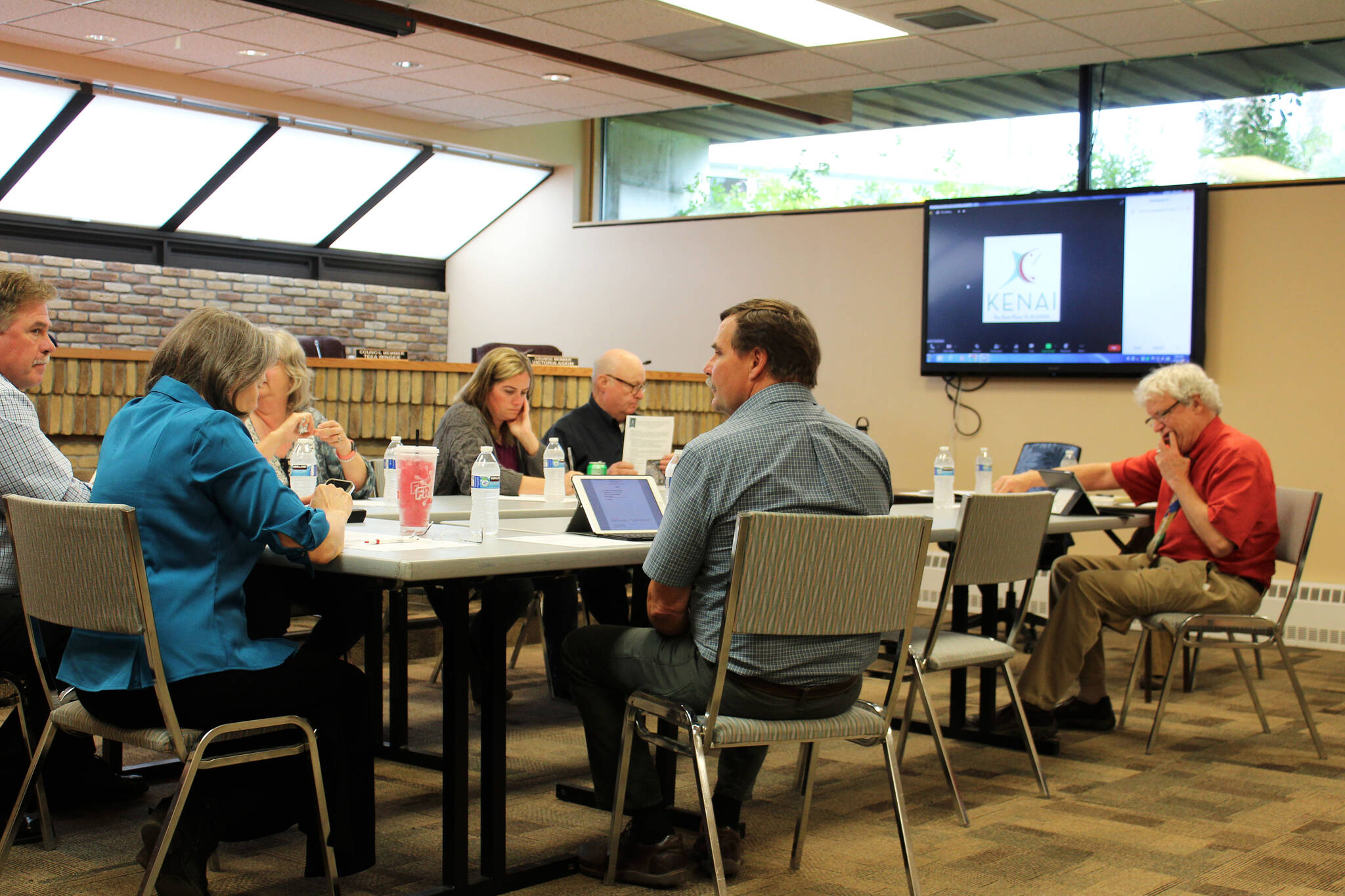McKinley Research Group LLC will study the feasibility of revitalizing the City of Kenai’s waterfront following the award of a $95,000 contract by the Kenai City Council during the body’s Dec. 15 meeting. The council postponed the contract in early November to allow newly appointed council members time to familiarize themselves with the issue.
The project, first identified as a priority in the city’s “Imagine Kenai 2030” comprehensive plan, was formally put up for consideration earlier this year, with Kenai City Manager Paul Ostrander describing the project area — which runs from the city dock to Millennium Square — as “untapped potential.” The council held a public work session to discuss the project with stakeholders in August.
Revitalization of the waterfront would be promoted in tandem with economic development incentives, such as exempting economic developments from city property tax, which the plan says would incentivize capital investment, and exempting depreciating properties from city tax, which would encourage the development of deteriorating buildings.
Among other things, the feasibility study includes engaging the community to develop the project’s vision, core concepts and priorities, evaluate market conditions and identify opportunities for revitalization, review existing infrastructure and develop an implementation strategy and recommendation.
The agreement approved by the council last week also said that the firm will have regular meetings with city personnel to discuss the project scope and timelines, provide regular updates to city personnel and engage community members throughout the process.
The city also received bids from PDC, A Division of RESPEC Company LLC and Agnew :: Beck for the study. The Kenai City Council approved $95,000 for a feasibility study during their Sept. 1 meeting.
City documentation shows that of the 19 pieces of land included in the project area, 74.4% are privately owned, 9% are owned by the City of Kenai and are leased and 16.5% are owned by the City of Kenai and are not leased. The parcels combined total about 112.6 acres. The largest parcel, owned by the Port of Kenai, covers about 16.5 acres. Owner Chidem Cherrier told the council during the August work session that she envisions a fisherman’s wharf for the area.
Those who supported the study said it was the logical next step in a process that’s been underway for months; those who were skeptical cited concerns about “government overreach.”
“Based on that information, there’s no reason to not approve this contract moving forward,” Knackstedt said.
Council member Teea Winger said that while she was able to meet with administration to get some of her questions answered, she was still aware of “concern” by some members of the community about the “scope” of the feasibility study.
“(There’s) a lot of concern that we are looking at private property,” Winger said. “Government overreach was mentioned by quite a few constituents, the concern being that this is private land that we’re looking at studying.”
Winger went on to say that she thinks the money approved for the study should be put directly toward the kinds of incentives described by the project outline.
“In the end, we can spend the money, we can form a plan, we can sell rainbows and dreams to our constituents, but nothing says that the 74% of private ownership is going to get on board with our vision,” Winger said.
Kenai Mayor Brian Gabriel said the waterfront area in question is uniquely suited to attract more visitors to Kenai and pushed back on the idea that the study would result in an overreach of government. He encouraged people to read through the services agreement to see what the study would actually consist of.
“At the end of the day, once we get this report it can go on a shelf,” Gabriel said. “There’s still that ‘do nothing’ box … but it’s a first step that you can identify that we are trying to do something to attract people to Kenai. We’re not going to seize people’s private property here.”
Council member James Baisden said he goes “back and forth” with the topic and that if he had been on the council four or five months ago, he would have voted against moving forward with the project. Baisden said he’s concerned that the project area includes so much privately owned land the city doesn’t have a lot of influence over.
“No matter what this plan comes up with, whether (private landowners) buy into it or not is a big deal,” Baisden said, adding that he doesn’t want to spend $100,000 of taxpayer money on a project he thinks has a fifty-fifty chance of working out.
Council member Deborah Sounart said she “about couldn’t breathe” when she saw that 74% of the project area was privately owned and would be more on board if the project was more narrowly focused on city-owned land, such as near the dock.
“For me, those are daunting numbers,” Sounart said. “That’s hard to chew on.”
Council member Glenese Pettey recalled positive feedback the city received, including from private landowners during a public work session in August and said not approving the study would reflect poorly on Kenai.
“We have a point of integrity, as far as the city is concerned, to do what we say we’re going to do,” Pettey said. “If you vote no on this, you’re going to say (the city) is not really serious in what they put their minds to.”
According to official meeting minutes from that work session, eight members of the public spoke about the project. Of those, six testified in support of developing the waterfront while the other two did not specifically address the redevelopment project. Of the six who spoke in favor, one person owned property in the project area and two said they owned property adjacent to the project area.
The council voted 6-1 in favor of awarding the contract, with Winger voting in opposition.
The Kenai City Council’s Dec. 15 meeting can be viewed on the city’s YouTube channel.
Reach reporter Ashlyn O’Hara at ashlyn.ohara@peninsulaclarion.com.


